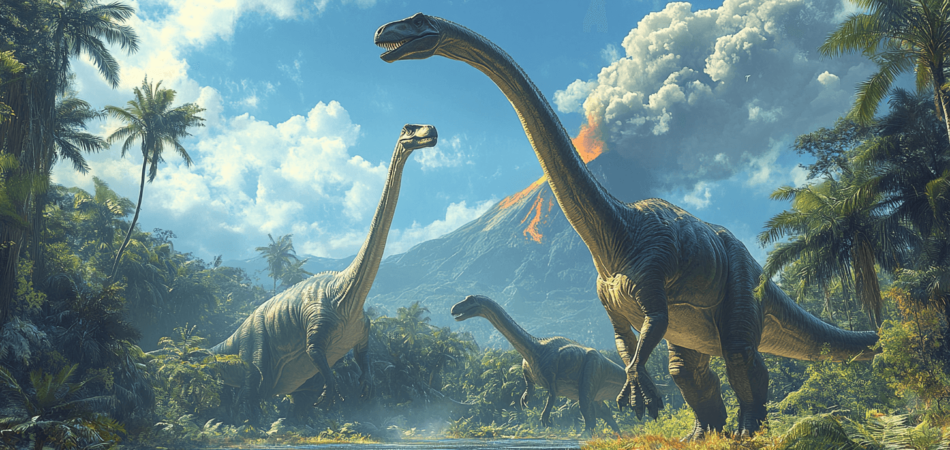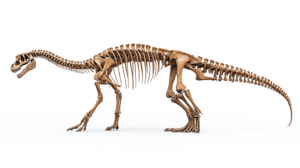Aardonyx Guide:
Aardonyx was an early dinosaur that lived in South Africa about 200 million years ago.
Aardonyx was an early dinosaur that lived in South Africa about 200 million years ago.

Sauropodomorphs were some of the most impressive dinosaurs to ever walk the Earth, known for their enormous size and distinctive long necks.
These gentle giants roamed the planet during the Late Triassic and Jurassic periods, evolving various characteristics that allowed them to thrive. Their unique physical traits, including long tails and pillar-like legs, helped them reach tall vegetation and support their massive bodies.
Interested in learning more about these fascinating prehistoric creatures? Discover the ancient world of dinosaurs and ignite your curiosity about these incredible creatures from our planet’s distant past
The evolutionary history of sauropodomorph dinosaurs showcases notable transformations in their anatomy and behavior, leading to gigantism and prolific diversification.
Sauropodomorphs are recognized for being part of the Saurischia, or “lizard-hipped” dinosaurs. Early sauropodomorphs emerged in
the Late Triassic period, with some basal forms showing a blend of traits—large body sizes combined with bipedal stances.
Through the Jurassic and into the Cretaceous periods, phylogenetic development saw sauropodomorphs acquire a suite of adaptations conducive to large body sizes, including longer necks, small heads, and a shift towards quadrupedality.
Specifically, osteohistological studies indicate the development of rapid growth rates early in the lineage, which played a crucial role in the evolution of sauropod gigantism.
Sauropodomorphs are renowned for distinctive anatomical traits that set them apart from other dinosaur clades. The following subsections detail their size and scale, skeletal structure, and skull and dentition, which underscore the uniqueness of this group.

Sauropodomorph dinosaurs underwent significant locomotor adaptations throughout their evolution, transitioning from bipedal to quadrupedal stances with diverse limb mechanics.
The early sauropodomorphs were primarily bipedal, utilizing their hind limbs for locomotion while their front limbs were shorter and possibly used for grasping or supporting their body while feeding.
As these dinosaurs evolved, there was a distinct shift towards quadrupedality, particularly in larger genera. This transition allowed them to support greater body masses and reach higher vegetation. Key changes included the elongation of the forelimbs and changes to the torso’s centre of mass.
Hindlimbs:Sauropodomorphs had robust and columnar hind limbs. This structure was advantageous for supporting their large body size. Early bipedal sauropodomorphs had hind limbs positioned directly under the body, allowing for efficient bipedal locomotion.
Forelimbs: As sauropodomorphs developed into quadrupeds, their forelimbs adapted to become load-bearing.
Mechanical analysis of limb proportions and trackway fossils suggests that these changes facilitated a wide-gauge limb posture for some sauropod genera, which may have contributed to their stability and locomotive efficiency.
The sauropodomorphs, a group of long-necked dinosaurs, demonstrated a diverse range of feeding mechanisms that evolved over time to primarily support a herbivorous diet.
Sauropodomorph dinosaurs possessed physical traits that equipped them for a plant-based diet. They had teeth adapted to their herbivorous lifestyle, which included features such as:
These tooth traits varied, with early sauropodomorphs exhibiting characteristics associated with a carnivorous diet, such as sharper teeth for meat consumption. However, as sauropodomorphs evolved, their teeth became more specialized for consuming plants.
The feeding strategies of sauropodomorphs were directly linked to their physical adaptations. Key points include:
Their long necks allowed sauropods to access a range of vegetation heights, from ground level to the upper canopy. The combination of these strategies suggests that sauropodomorphs were efficient at harvesting vegetation, making the most of the ecosystems in which they lived.
Sauropodomorph dinosaurs prospered in a variety of environments, adapting to diverse ecological niches during the Mesozoic Era.
Sauropodomorphs were predominantly land-based megaherbivores, favoring vast floodplains and forests that provided ample vegetation for consumption. Evidence from fossil records suggests that they inhabited regions which would, in the modern day, span continents such as South America, Africa, and Asia. These areas typically offered a rich supply of flora and exhibited a range of climates from semi-arid to humid. This diverse environment played a crucial role in shaping the diet and lifestyle of these giant creatures. For instance, in terms of diplodocus habitat and behavior, these dinosaurs favored open woodlands and coastal plains where their long necks enabled them to reach high vegetation and forage efficiently. Their social behavior likely included herding, which would provide safety in numbers from potential predators while navigating the vast landscapes they inhabited.
Discover the fascinating traits of sauropodomorphs, including their long necks and massive bodies. Our team provides detailed information about different types of dinosaurs to help you understand these unique creatures.
Sauropodomorphs were distinguished by their extremely large size, long necks, and tails. They had relatively small heads and featured nares (nostrils) positioned high on the skull. Their posture shifted from bipedal to quadrupedal in later sauropods.
Their long necks allowed sauropodomorphs to reach high vegetation, providing a competitive advantage in feeding. The evolution of their quadrupedal stance likely supported their massive bodies and facilitated the exploitation of low-lying vegetation as well.
Sauropodomorphs were herbivores. They had leaf-shaped teeth adapted to a diet of plants. The teeth’s structure suggests they would strip foliage rather than chew, likely swallowing stones (gastroliths) to help grind down food in their stomachs.
Prosauropods included species like Plateosaurus, Massospondylus, and Riojasaurus. These early sauropodomorphs were generally smaller and more primitive than their later relatives, the giant sauropods.
Characteristics supporting large body size in sauropodomorphs included small heads, long necks, pillar-like legs, and a quadrupedal stance. These features evolved to support their massive size and weight.
Sauropodomorphs typically resided in lush environments where plant life was abundant. Geological evidence suggests they lived in a variety of habitats, from arid to subtropical, adapting to a broad range of ecological niches over time.